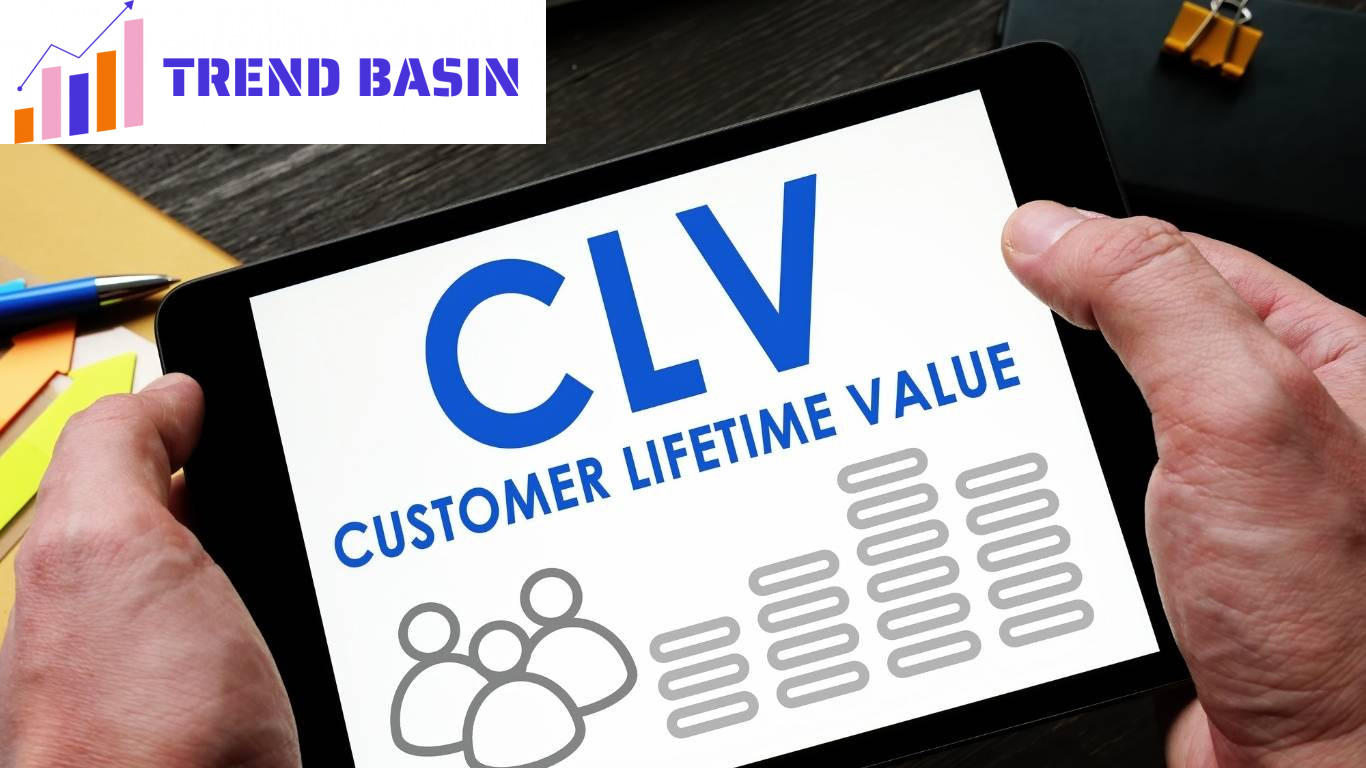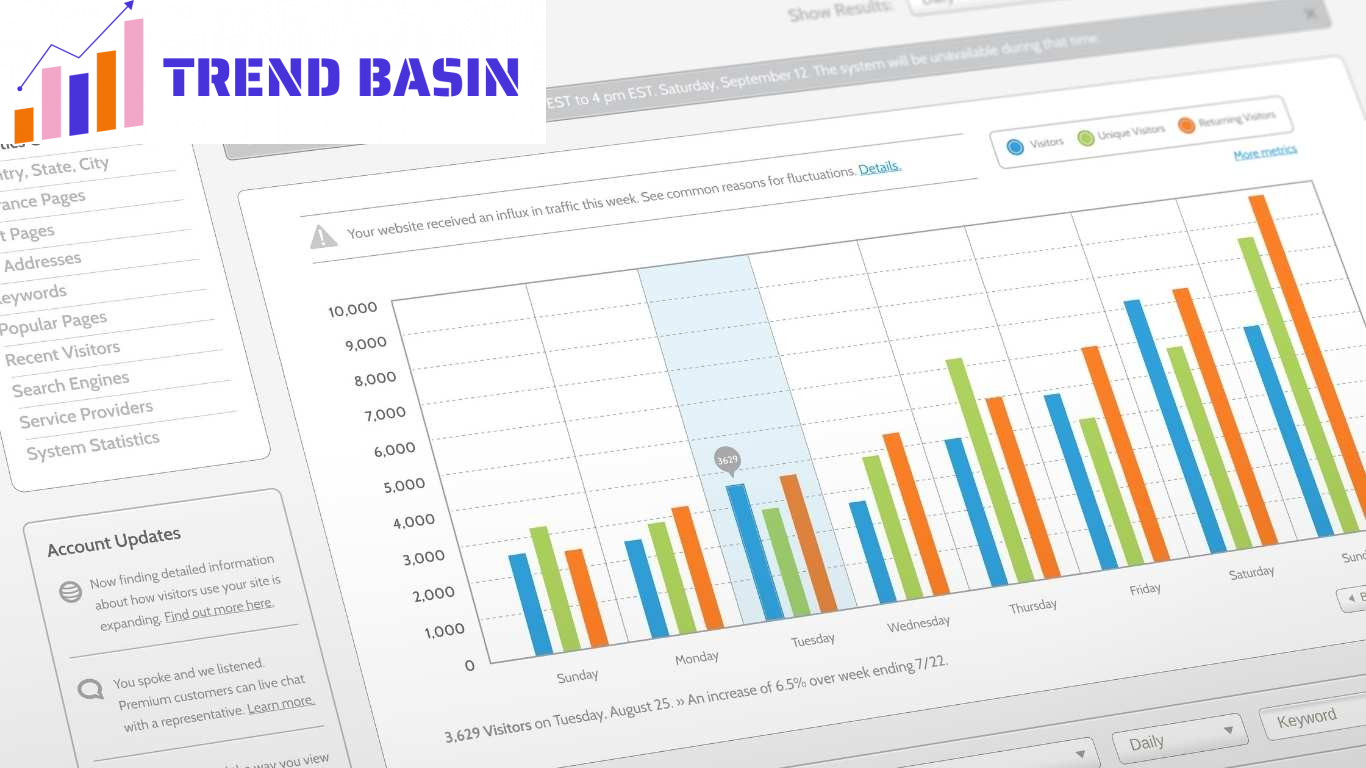Understanding Customer Lifetime Value (CLV): A Comprehensive Guide
In the competitive landscape of modern business, understanding the Customer Lifetime Value (CLV) metric is crucial for driving long-term growth and profitability.
CLV provides insights into the total worth of a customer throughout their relationship with a business.
By calculating CLV, businesses can make informed decisions regarding marketing, sales, and customer service strategies.
At Trend Basin, we recognize the importance of leveraging data to enhance customer relationships and drive success.
Key Takeaways
Understanding Customer Lifetime Value (CLV) is essential for businesses looking to enhance customer relationships and profitability.
By calculating and analyzing CLV, businesses can make informed decisions that optimize marketing strategies, improve customer retention, and drive long-term success.
Implementing effective customer feedback mechanisms and loyalty programs can significantly increase CLV.
What is Customer Lifetime Value (CLV)?
Customer Lifetime Value (CLV) is a predictive metric that estimates the total revenue a business can expect from a single customer account throughout their entire relationship.
CLV takes into consideration several factors, including average purchase value, purchase frequency, and customer retention rate.
Understanding CLV helps businesses allocate resources effectively and tailor strategies that maximize customer value.
Why is CLV Important for Businesses?
Understanding CLV is essential for several reasons:
- Resource Allocation: Knowing the CLV allows businesses to allocate marketing budgets effectively. Businesses can spend more on acquiring customers with higher CLV.
- Customer Segmentation: CLV helps businesses identify high-value customers, enabling targeted marketing efforts.
- Retention Strategies: By understanding the lifetime value, businesses can implement effective retention strategies to keep valuable customers.
- Profitability Analysis: CLV helps businesses assess profitability by comparing the cost of acquiring customers with the revenue they generate over time.
- Strategic Decision Making: Businesses can use CLV to make informed strategic decisions regarding product offerings and marketing strategies.
How to Calculate Customer Lifetime Value?
Calculating CLV involves three key components:
- Average Purchase Value: This is calculated by dividing total revenue by the number of purchases over a specific period.
- Purchase Frequency: This is calculated by dividing the total number of purchases by the number of unique customers within that same period.
- Customer Lifespan: This refers to the average duration a customer remains active. It can be determined by analyzing customer retention rates.
The formula for calculating CLV is:
CLV = Average Purchase Value × Purchase Frequency × Customer Lifespan
For example, if a customer spends an average of $100 per purchase, makes a purchase twice a year, and remains a customer for five years, their CLV would be:
CLV = $100 × 2 × 5 = $1000
What Are the Different Models for CLV Calculation?
There are several models to calculate CLV, each suited to different business needs:
- Simple CLV Model: This straightforward model uses the basic formula mentioned above. It’s suitable for businesses with consistent revenue streams.
- Discounted Cash Flow Model: This model takes into account the time value of money. It calculates future revenue in today’s dollars, providing a more accurate representation of CLV.
- Predictive CLV Model: This advanced model uses historical data and statistical algorithms to predict future customer behavior, making it ideal for businesses with extensive data.
- Segmented CLV Model: This model calculates CLV for different customer segments, allowing businesses to tailor strategies based on the unique characteristics of each group.
How Can Businesses Improve Customer Lifetime Value?
Improving CLV involves implementing various strategies aimed at enhancing customer experience and satisfaction. Here are several effective methods:
- Personalization: Tailor marketing messages and product recommendations based on customer preferences and behavior.
- Loyalty Programs: Implement programs that reward repeat customers with discounts, exclusive offers, or points that can be redeemed.
- Exceptional Customer Service: Provide prompt and helpful customer service to resolve issues and foster positive relationships.
- Regular Communication: Maintain regular contact with customers through email newsletters, updates, and personalized messages to keep them engaged.
- Product Recommendations: Use customer purchase history to suggest relevant products, increasing the likelihood of repeat purchases.
- Feedback Mechanisms: Actively seek customer feedback to identify areas for improvement and implement changes that enhance their experience.
- Education and Content Marketing: Provide valuable content that educates customers about your products and industry trends, positioning your brand as an expert.
- Streamlined Customer Experience: Simplify the purchasing process, making it easy for customers to find and buy products.
Real-World Case Study: Increasing CLV through Loyalty Programs
A well-known coffee chain implemented a loyalty program that allowed customers to earn points with every purchase. As customers accumulated points, they could redeem them for free drinks and exclusive offers.
As a result, the company saw a 30% increase in repeat purchases among loyalty program members, significantly boosting their CLV.
How Does CLV Affect Marketing Strategies?
Understanding CLV influences marketing strategies in several ways:
- Targeted Campaigns: Knowing which customers have higher CLV allows businesses to create targeted marketing campaigns aimed at retaining these customers.
- Budget Allocation: Businesses can allocate more budget towards acquiring customers with higher lifetime value, optimizing return on investment.
- Customer Acquisition Strategy: Businesses can refine their acquisition strategies by focusing on channels that attract high-value customers.
- Customer Relationship Management: CLV data can guide customer relationship management efforts, helping to prioritize high-value clients.
- Content Marketing Focus: Marketing efforts can be directed toward producing content that resonates with high CLV segments, improving engagement and retention.
What Role Does Customer Feedback Play in CLV Improvement?
Customer feedback is vital in enhancing CLV. It provides insights into customer satisfaction and areas for improvement. By actively soliciting and acting on feedback, businesses can:
- Identify Pain Points: Understand customer frustrations and address them promptly.
- Enhance Product Offerings: Use feedback to improve existing products and develop new offerings that meet customer needs.
- Foster Engagement: Show customers that their opinions matter by implementing changes based on their feedback, increasing loyalty.
- Measure Satisfaction: Regularly measure customer satisfaction through surveys and feedback forms to track improvements and areas needing attention.
- Adjust Marketing Strategies: Use feedback to refine marketing messages and ensure they resonate with customers’ expectations.
How to Segment Customers Based on CLV?
Segmenting customers based on CLV allows businesses to tailor their marketing strategies effectively. Here are steps to implement customer segmentation:
- Identify Key Metrics: Define the metrics that are most relevant to your business. This may include purchase frequency, average order value, and customer lifespan.
- Analyze Historical Data: Use historical sales data to determine the CLV of different customer groups. Look for patterns in purchasing behavior.
- Create Segments: Group customers into segments based on similar characteristics or behaviors, such as high-value, medium-value, and low-value customers.
- Tailor Marketing Strategies: Develop specific marketing campaigns for each segment. For instance, high-value customers may receive exclusive offers or personalized communication.
- Monitor and Adjust: Continuously monitor the performance of each segment and adjust strategies based on changing customer behaviors and preferences.
What Are the Challenges in Measuring CLV?
While measuring CLV provides valuable insights, several challenges can arise:
- Data Quality: Accurate calculations rely on high-quality data. Incomplete or inaccurate data can lead to incorrect CLV estimates.
- Dynamic Customer Behavior: Customer behaviors and preferences can change over time, making it challenging to predict future value accurately.
- Time and Resource Intensive: Gathering and analyzing data to calculate CLV can be time-consuming and require significant resources.
- Segmentation Complexity: Segmenting customers effectively requires a deep understanding of customer behavior and can be complex.
How to Use CLV in Customer Relationship Management (CRM)?
Integrating CLV into CRM strategies can enhance customer relationships and drive growth. Here are ways to leverage CLV in CRM:
- Customer Profiles: Use CLV data to create detailed customer profiles that inform personalized marketing efforts.
- Targeted Outreach: Focus CRM efforts on high-value customers to strengthen relationships and improve retention.
- Retention Campaigns: Implement targeted retention campaigns for customers with decreasing CLV, aiming to re-engage them.
- Performance Tracking: Track CLV over time to assess the effectiveness of CRM strategies and make data-driven adjustments.
- Integrate with Marketing Automation: Use CLV data to inform automated marketing campaigns, ensuring high-value customers receive appropriate messaging.
Real-World Case Study: Utilizing CLV in CRM
A retail brand used CLV data to enhance its CRM efforts. By analyzing customer segments based on CLV, they identified high-value customers who were at risk of churning.
The company implemented targeted email campaigns offering personalized discounts and exclusive offers to these customers. As a result, they successfully retained 70% of the high-risk segment, significantly increasing overall CLV.
Conclusion
Understanding and leveraging Customer Lifetime Value (CLV) is essential for any business looking to thrive in a competitive marketplace.
By calculating and analyzing CLV, businesses can allocate resources effectively, tailor marketing strategies, and enhance customer relationships.
Investing in customer feedback mechanisms and loyalty programs can lead to significant improvements in CLV, driving long-term success.
At Trend Basin, we believe that a data-driven approach to customer management can unlock new opportunities for growth and profitability.
For more insights and updates, connect with us on LinkedIn and Facebook.



